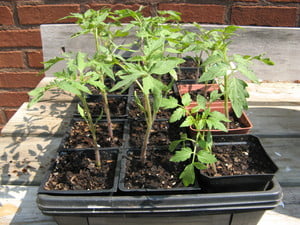Ecological succession classroom activities teach students about biomes and ecosystems through hands-on educational lessons. Small group and class activities extend learning beyond textbook pages. Students can build biomes or dioramas to represent different geographical areas and compare the land and creatures within the ecosystems. Students can also learn the basics of the scientific method by charting and graphing their results.
Ecosystem and biome projects demonstrate how plant growth, animal life and geographical aspects cycle and vary due to climate. Ecological succession is the regular pattern of changes in the types of species in a community. Before embarking on extension activities teach the students about the 10 main types of ecological characteristics through textbook units and educational movies. The 10 main groups include rainforest, temperate forest, tundra, taiga, desert, grasslands, rivers, ponds and lakes, temperate oceans and tropical oceans. Ecological succession activities should be incorporated into lesson plans to address grade level curriculum standards. When planning an extension project, look at each stage of student tasks to highlight the research, comparison, result reporting and comprehension related skills that will be required during the activity to achieve academic goals.
Venn Diagrams
Create an ecosystem comparison project using Venn diagrams. Students will learn about the characteristics of biomes and an increased vocabulary awareness. Common boime or ecosystem characteristics used in comparison charts include temperature, plant types, rainfall, animal and marine life, geographic locations and physical features. You can also include an artistic aspect to the activity by allowing students to draw or color photos of ecosystems or creating a diorama.
Terrarium Project
Students can work either as a small group or individually to create a desert terrarium to demonstrate the ecological characteristics of a desert biome. Materials needed for the project include a 10 gallon aquarium, peat moss, sand, vermiculite, gravel, cardboard box for hiding and shade, decorative rocks, cacti and succulents. Animal life which is native to a desert environment can also be included into the terrarium. Suggestions for live inhabitants include desert lizards, crabs or a tortoise. A lamp should be added to the habitat to warm the animals and provide basking areas. Students learn how desert plants and animals adapt to their environment for food, shade and shelter by studying desert ecosystems.
Interactive educational games also teach students about specific attributes of ecosystems. Play a game of “Whose Woods are These?” with the class. Print images of animal life, plants and trees and secure with a safety pin to the back of each student’s shirt. Students play a “20 Questions” style game to identify the image pinned to their shirts. Give the students about five minutes to work in partners and ask questions of each other. You can add another dimension to the game by taping each image to a color-coded card. If you assign a specific color to each type of ecosystem the students can work with other students representing the same system to make a poster with their images. Supply each student with posterboard size paper so they have enough room to write sentences or facts about the ecosystem.



